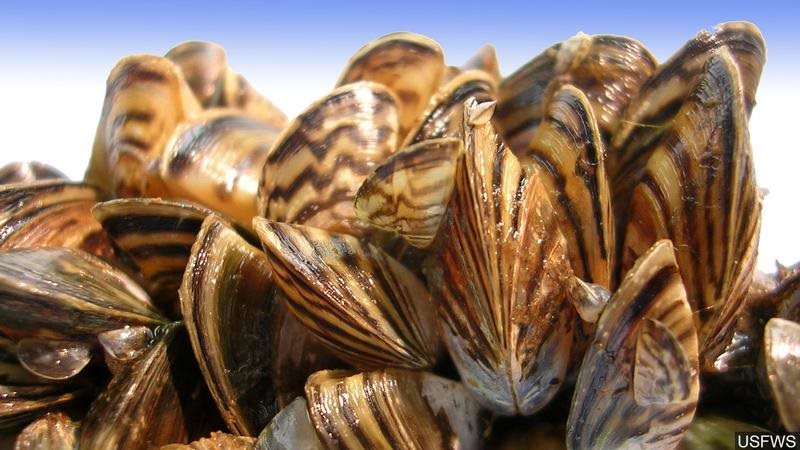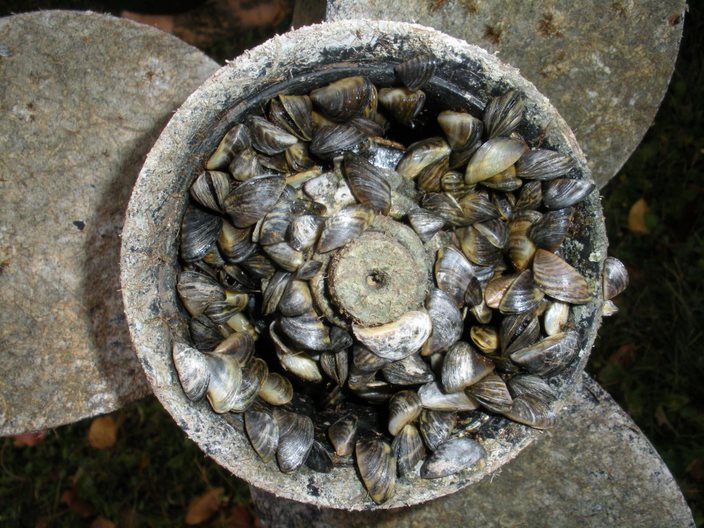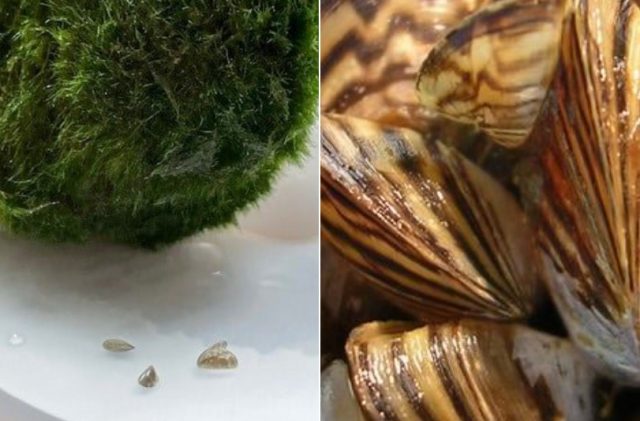OHIO – Invasive species have found their way into Ohio in multiple different ways, most of the time hitchhiking on items in transport. When established in a new ecosystem some species can wreck havok on native species.
US Fisheries in Wildlife is now alerting to another one of these vessels that may contain a invasive species in Ohio the zebra mussel.
For years Ohio waters have been invaded by zebra mussels particularly the great lakes region and Ohio specialists are trying very hard to keep them from invading more. Zebra mussels reproduce quickly, can quickly take over once they get established in a waterbody and cause significant damage including disrupting the food chain, changing the chemistry of the water (which can cause more blue green algae outbreaks or offensive taste), and clogging water intake and delivery systems.
Wildlife officials have found that moss balls sold in aquarium stores, and decoration stores have contained these mussels.

What are “moss balls?”
A moss ball is a species of green algae that is formed into a ball and is 2 to 5 inches in diameter. Moss balls are purchased for home aquariums are found in pet stores nationwide.
What should I do if I recently purchased moss balls for my aquarium?
DESTROY, DISPOSE, DRAIN
Do not dispose of the moss balls in drains, waterways, or gardens. Moss balls must be destroyed and disposed of in a sealed container in the trash.

When following any of the methods listed below, ensure that the disposal method you choose is in compliance with your local state laws and animal welfare regulations.
DESTROY in one of three ways:
- Freeze – Place the moss ball into a sealable plastic bag and freeze for at least 24 hours.
- Boil – Place the moss ball in boiling water for at least 1 full minute.
- Bleach / Vinegar – Submerge the moss ball in chlorine bleach or undiluted white vinegar for 20 minutes.
DISPOSE of the moss ball and any of its packaging in a sealed plastic bag in the trash. If vinegar, boiling water, or bleach was used, the liquid can be disposed down a household drain —never down a storm drain where it could enter and damage local waterways.
DRAIN and clean the aquarium.
Collect any fish or other living organisms and place them in another container, with water from a separate, uncontaminated water source. Sterilize the contaminated aquarium water by adding ¼ teaspoon bleach for each gallon of water. Let the water sit for 10 minutes and then dispose the sterilized water down a household drain.
Clean the aquarium and accessories using one of the following methods, ensuring that the decontaminate method you choose is in accordance with manufacturers’ recommendations:
- Hot Water Method:
- Use water that is 140 degrees F to flush and coat the tank and all accessory surfaces for at least one minute, OR
- Disinfection Method:
- Submerge the moss ball in 1 cup of chlorine bleach per gallon of water for 10 minutes or undiluted white vinegar for 20 minutes.
- Soak the aquarium, substrate, rocks, décor, and filter media in the bleach water solution for 10 minutes.
- Rinse off all items prior to setting up the aquarium.
- Dispose of the previously used filter media and replace with new media.
- Use a dechlorinating product to neutralize any residual chlorine prior to reintroducing aquatic life.
It is recommended that you do another water change within a week and continue to monitor the tank for any unusual or unexpected aquatic life.
A more detailed list of DESTROY, DISPOSE, DRAIN instructions can be found here.
Report Suspicious Species
Have you seen anything unusual? If you think you have found a new invasive organism, contact your state fish and game agency to see if they are aware of the species.
You should also report the species using the USGS Nonindigenous Aquatic Species Sighting Report Form. Upon submission, the information you provide is sent to USGS staff experts for verification. If you are looking to receive alerts about new sightings of specific aquatic invasive species or receive alerts for a taxonomic group or for one or more states please register for the USGS NAS Alert System.










